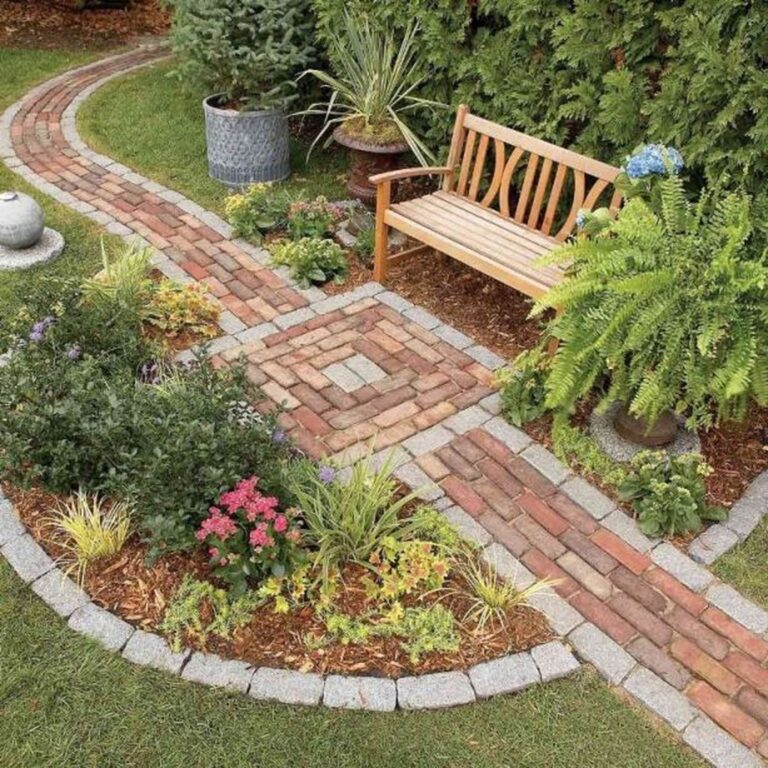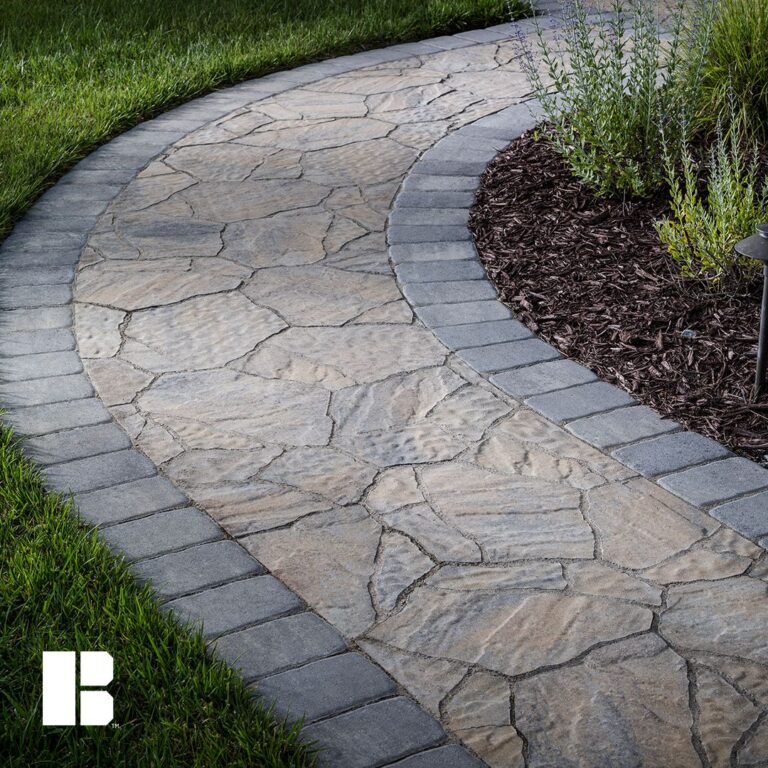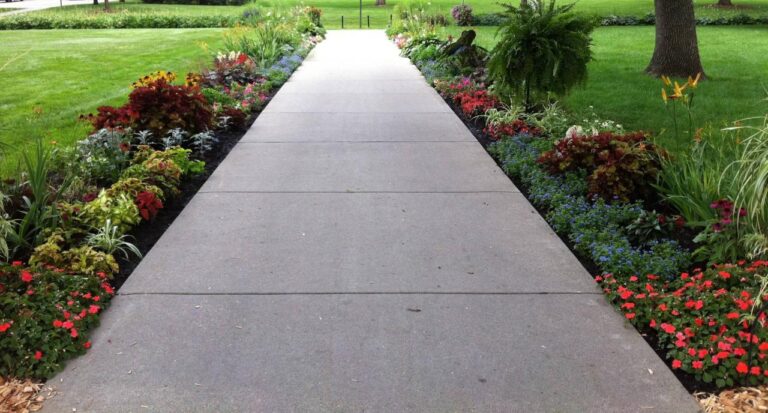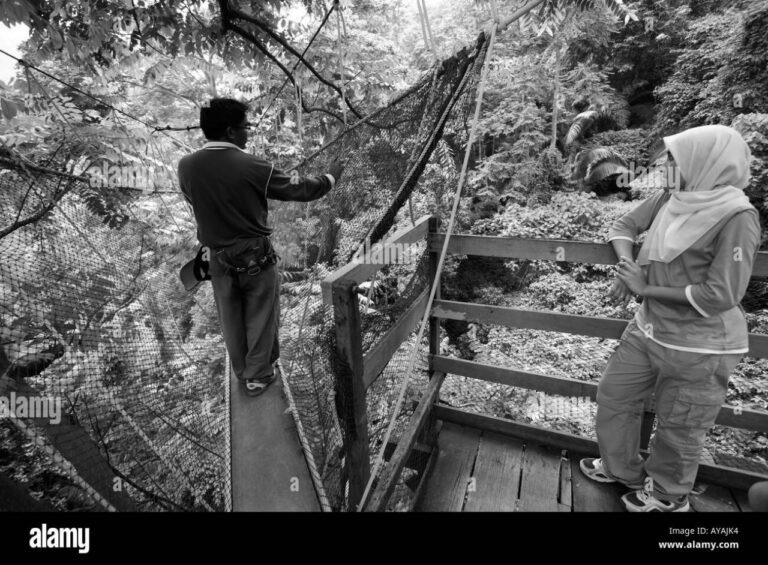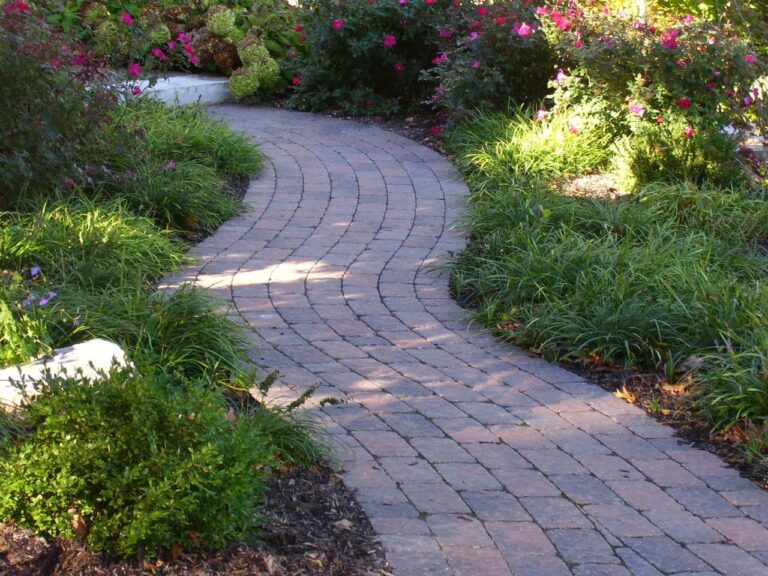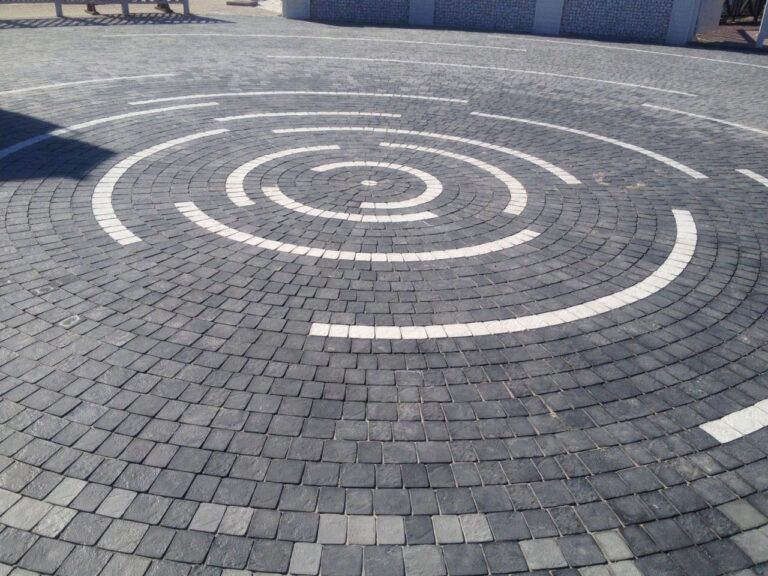Front Paver Walkway
Front paver walkways are more than just pathways; they are the welcoming faces of homes, setting the tone and style for the entire property. This guide delves into the multifaceted world of front paver walkways, exploring various paver types, design considerations, installation processes, budgeting, maintenance, and crucial accessibility and safety features. From selecting the perfect material to ensuring a long-lasting, aesthetically pleasing, and safe walkway, we’ll cover everything you need to know to create the entrance of your dreams.
We’ll examine the practical aspects, such as material selection, cost estimation, and installation techniques, alongside the creative elements of design, incorporating landscaping and addressing accessibility concerns. Whether you’re a seasoned DIY enthusiast or planning to hire professionals, this comprehensive guide provides valuable insights and practical advice to navigate the entire process successfully.
Types of Pavers for Walkways
Choosing the right pavers for your front walkway is crucial for both aesthetics and longevity. The material you select significantly impacts the overall look, durability, and maintenance requirements. Several excellent options exist, each with its own set of advantages and disadvantages.
Paver Material Comparison
The following table compares common paver materials, considering their pros, cons, and cost.
| Material | Pros | Cons | Cost Range (per sq ft) |
|---|---|---|---|
| Brick | Durable, classic look, a wide variety of colors and styles | Can be more expensive than concrete, requires more maintenance | $5 – $15 |
| Concrete | Affordable, versatile, available in various colors and textures | Can crack under stress, less aesthetically pleasing than some natural stones | $3 – $8 |
| Natural Stone (e.g., flagstone, slate) | Unique appearance, durable, high-end look | Expensive, can be difficult to install, requires sealing | $10 – $30+ |
| Permeable Pavers | Environmentally friendly, reduces runoff, helps prevent flooding | Can be more expensive than traditional pavers, and requires specialized installation | $8 – $20+ |
Aesthetic Considerations and Architectural Styles
Different paver materials lend themselves to different architectural styles. For instance, brick pavers create a classic and timeless look suitable for traditional, Victorian, or colonial homes. Natural stone pavers, with their unique textures and colors, complement modern, rustic, or Mediterranean designs. Concrete pavers offer versatility, adapting to various styles with the choice of color, texture, and pattern.
Durability and Maintenance
The durability and maintenance requirements vary significantly across paver types. Brick pavers are highly durable but may require occasional cleaning and sealing. Concrete pavers are relatively low-maintenance but are susceptible to cracking. Natural stone pavers, while durable, need regular sealing to protect against staining and weathering. Permeable pavers require less maintenance than other types but need occasional cleaning to prevent clogging.
Design Considerations for Front Walkway Pavers
Designing a visually appealing and functional walkway involves careful consideration of layout, pattern, and integration with landscaping elements. The design should complement the architectural style of the home and create a welcoming entrance.
Victorian-Style Walkway Design
A Victorian-style home might feature a curved walkway, approximately 15 feet long and 4 feet wide, made of brick pavers in a mix of reddish-brown and burgundy hues. The curve could incorporate a gentle S-shape, creating a more elegant and inviting approach. Decorative elements, such as a small circular patio area at the end of the walkway, could be added using the same brick pavers in a contrasting pattern. Ornate metal edging could define the walkway’s boundaries.
Paver Patterns
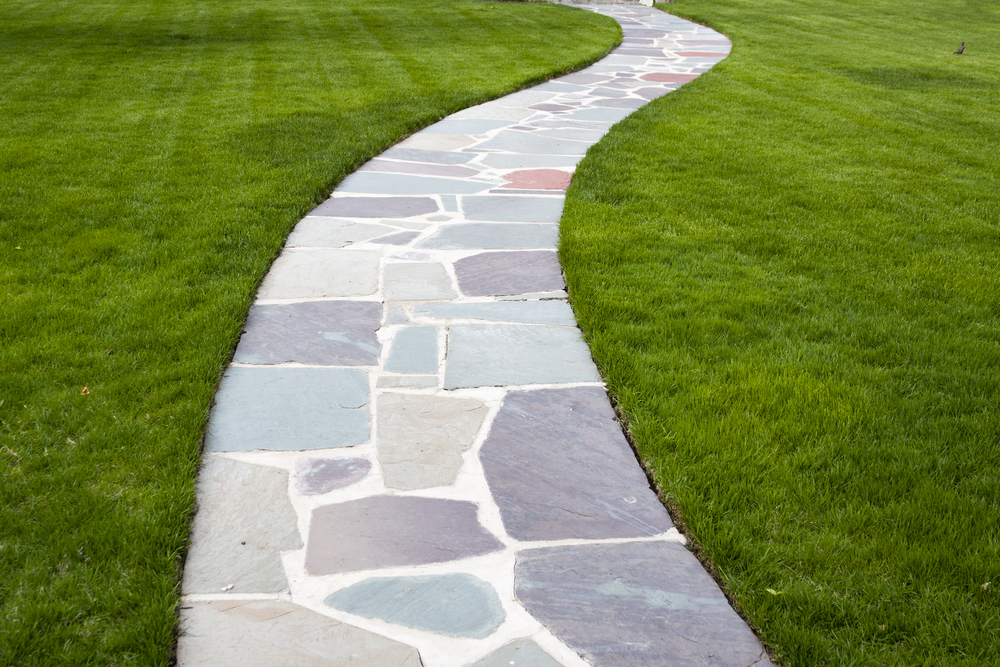
Source: cloudfront.net
Various paver patterns offer distinct visual impacts. A running bond pattern (bricks laid end-to-end) is simple yet effective. A herringbone pattern (bricks laid in a V-shape) creates a more intricate and visually interesting design. A basketweave pattern (bricks laid in an interwoven pattern) provides a rustic and textured appearance. The chosen pattern should complement the overall style of the home and walkway.
Integrating Landscaping Elements
Landscaping elements can enhance the walkway’s aesthetic appeal. Strategically placed shrubs and flowers can soften the hard lines of the pavers and add color. Low-voltage landscape lighting can illuminate the walkway at night, increasing safety and creating a warm ambiance. Consider using materials that complement the pavers, such as stone or wood for edging or retaining walls.
Installation Process of Front Walkway Pavers
Installing pavers requires careful planning and execution. Proper preparation ensures a level, stable, and long-lasting walkway.
Step-by-Step Installation Guide
The installation process generally involves these steps:
- Site preparation: Excavate the area to the desired depth, compact the base, and install a weed barrier.
- Base installation: Lay a compacted gravel base followed by a layer of sand to create a level surface.
- Paver layout: Begin laying pavers, ensuring consistent spacing and alignment. Use string lines for straight lines and curves.
- Compaction: Compact the pavers to ensure stability and prevent settling.
- Joint sand: Fill the joints between pavers with polymeric sand to stabilize and prevent weed growth.
- Edging: Install edging to prevent the pavers from shifting.
- Final cleanup: Remove excess sand and debris.
Tools and Equipment
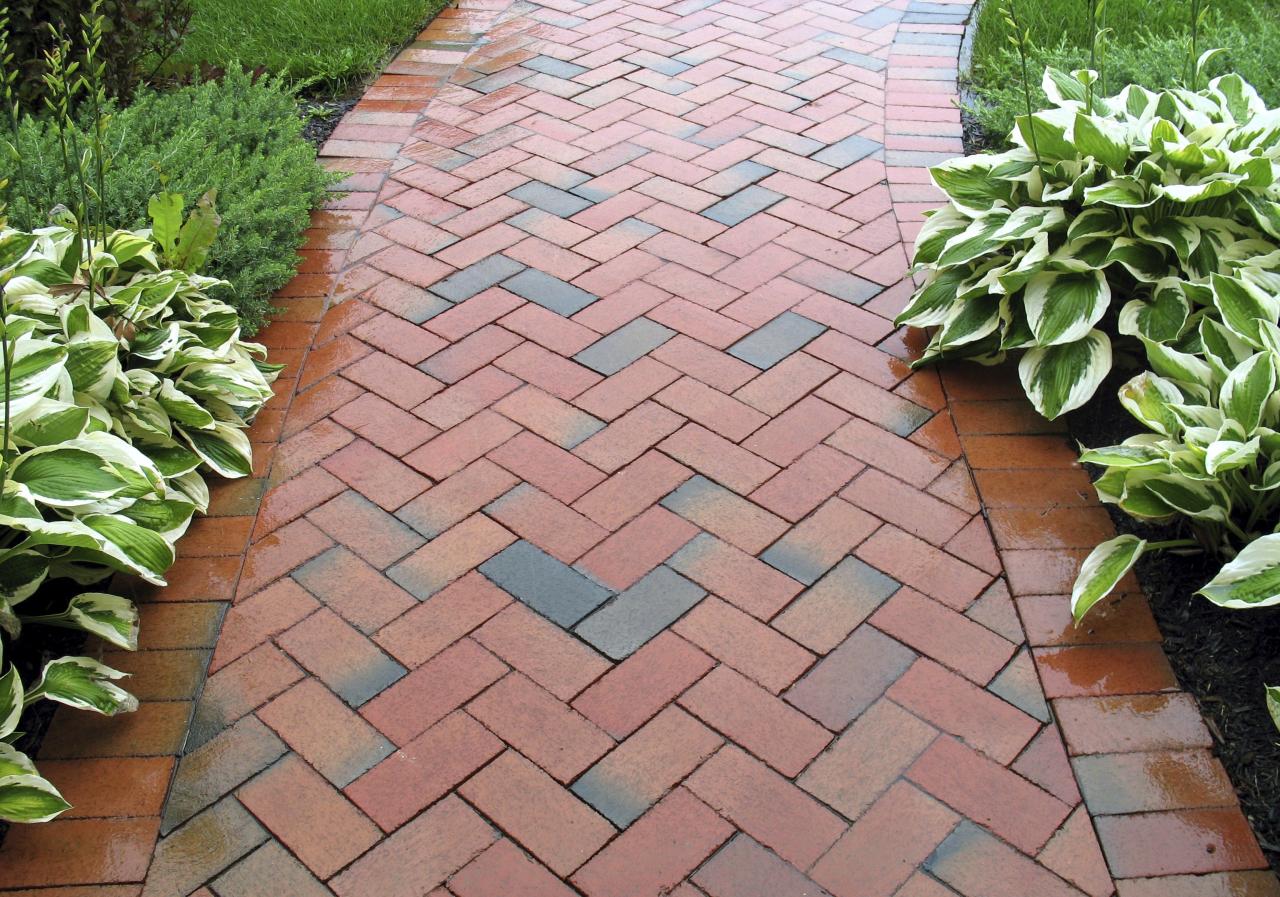
Source: paversdrivewaysva.com
Necessary tools include shovels, rakes, tampers, levels, string lines, and measuring tapes. Specialized equipment such as a plate compactor may be needed for larger projects.
Cost and Budgeting for Front Walkway Pavers: Front Paver Walkway
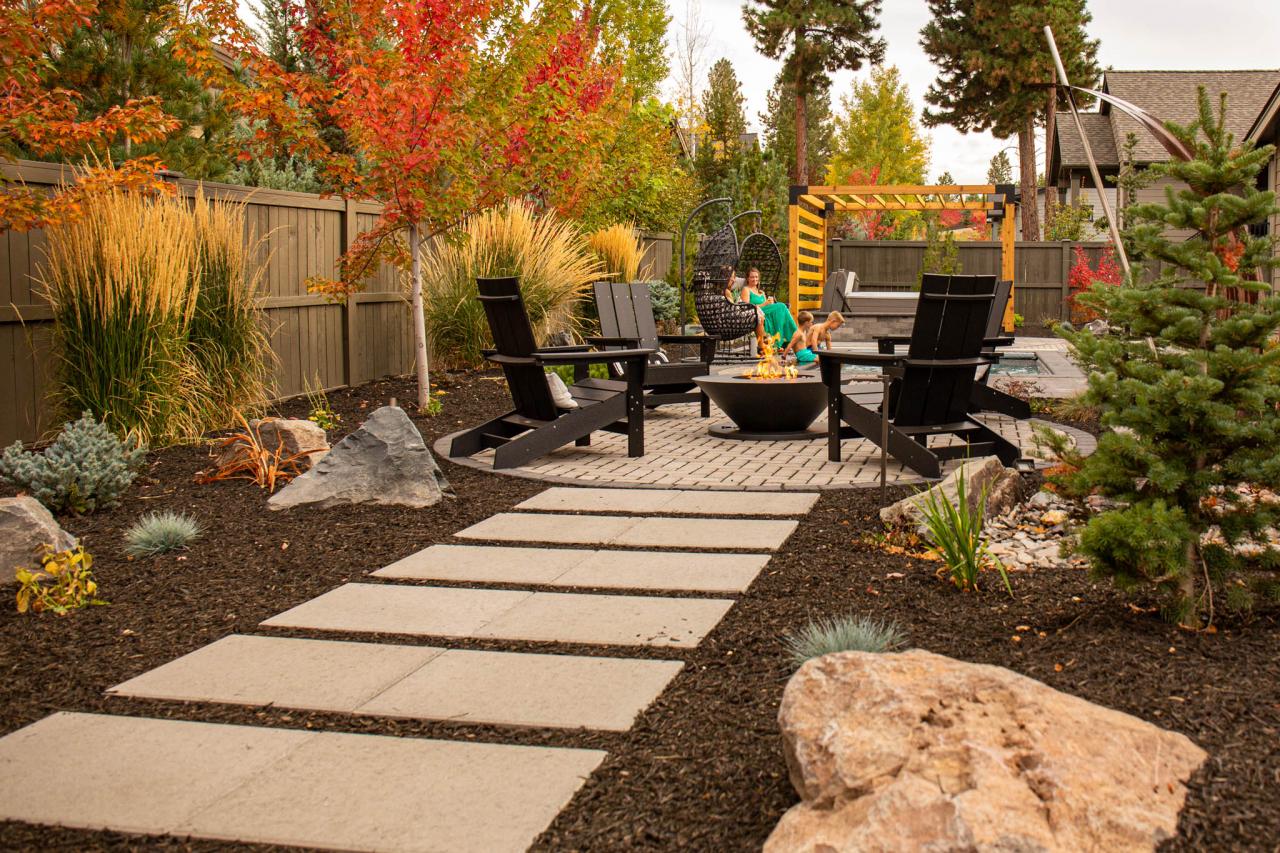
Source: westerninterlock.com
The cost of a front walkway paver project varies depending on several factors. Accurate budgeting is crucial to avoid cost overruns.
Cost Breakdown
Costs include materials (pavers, base materials, sand, edging), labor (if hiring professionals), permits, and any additional features like lighting or landscaping.
Sample Budget (10ft x 3ft walkway)
| Material | Quantity | Cost per unit | Total Cost |
|---|---|---|---|
| Concrete Pavers | 30 sq ft | $5/sq ft | $150 |
| Brick Pavers | 30 sq ft | $10/sq ft | $300 |
| Natural Stone Pavers | 30 sq ft | $20/sq ft | $600 |
| Labor (Estimate) | – | $10/sq ft | $300 |
Note: These are estimates, and actual costs may vary depending on location and specific materials chosen.
Maintenance and Repair of Front Walkway Pavers
Regular maintenance is essential for preserving the appearance and functionality of your walkway. Addressing minor issues promptly prevents larger, more costly repairs.
Common Problems and Solutions
Common problems include settling, cracking, and weed growth. Settling can be addressed by lifting and recompacting the pavers. Cracks can be repaired with epoxy or by replacing damaged pavers. Weed growth can be controlled by using polymeric sand and regular weeding.
Cleaning and Sealing
Regular cleaning with a broom and water removes dirt and debris. Sealing pavers, especially natural stone, protect them from staining and weathering, extending their lifespan.
Repairing Damaged Pavers
Replacing a cracked or damaged paver involves removing the old paver, preparing the base, and installing a new paver, ensuring proper compaction and joint filling.
Accessibility and Safety Considerations
Designing an accessible and safe walkway is crucial for all users. Incorporating accessibility features ensures everyone can use the walkway comfortably and safely.
Accessibility Checklist
- Ensure a smooth, level surface with minimal slope.
- Provide adequate space for wheelchairs and other mobility devices.
- Avoid sharp elevation changes.
- Consider using tactile paving for visually impaired individuals.
Safety Features, Front paver walkway
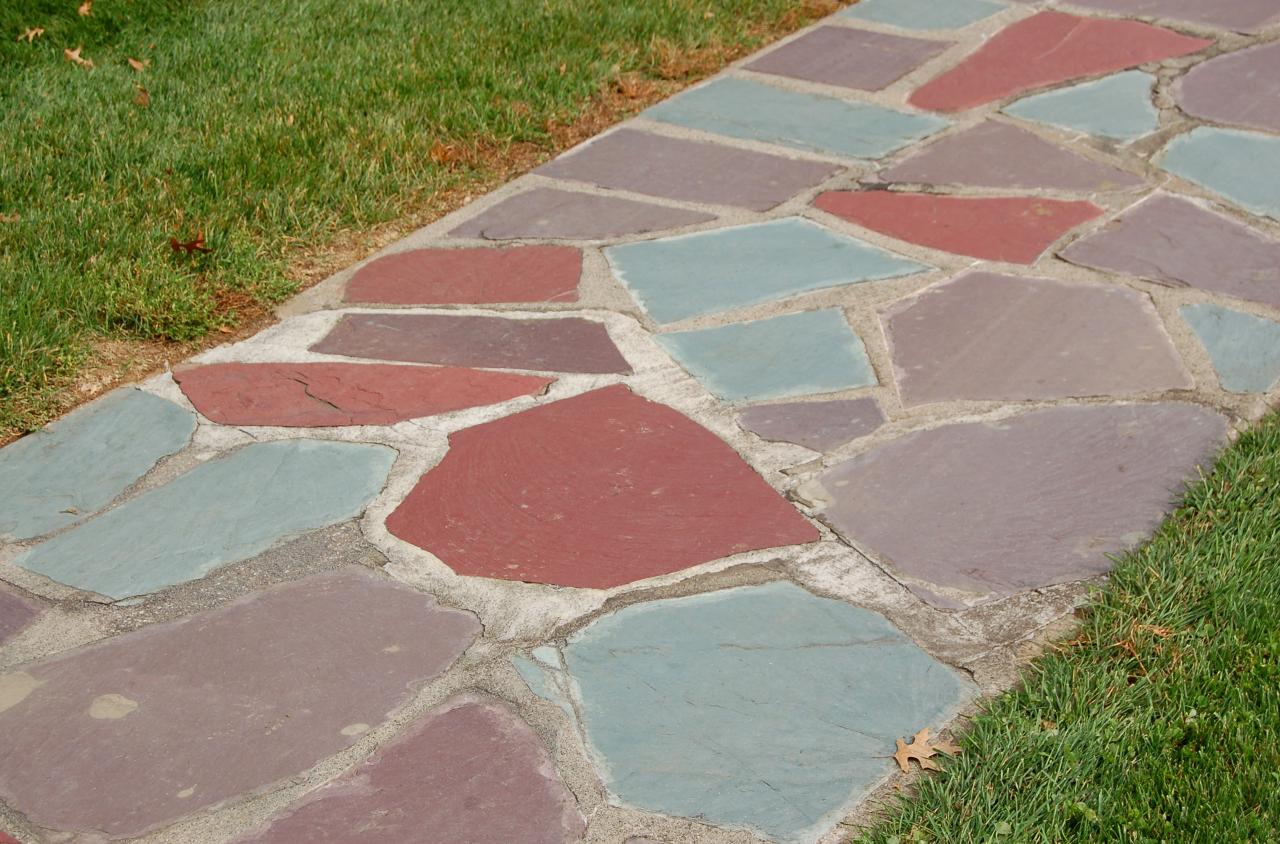
Source: tqn.com
- Install adequate lighting for nighttime visibility.
- Choose non-slip pavers or apply a non-slip surface treatment.
- Avoid creating tripping hazards with uneven surfaces or protruding elements.
- Ensure proper drainage to prevent slippery surfaces.
FAQ Guide
What is the lifespan of a paver walkway?
With proper installation and maintenance, a paver walkway can last for 20-30 years or even longer, depending on the material and climate.
Can I install a paver walkway myself?
While possible for smaller projects, installing a paver walkway is labor-intensive. For larger or more complex designs, professional installation is often recommended.
How often should I seal my paver walkway?
Sealing frequency depends on the paver type and climate. However, sealing every 2-3 years is generally recommended to protect against staining and weathering.
What are the best pavers for a high-traffic area?
Durable materials like concrete pavers or natural stone are best suited for high-traffic areas due to their strength and resistance to wear and tear.
How do I prevent weeds from growing between pavers?
Use weed barrier fabric during installation and regularly remove weeds that emerge. Consider using polymeric sand in the joints to help prevent weed growth.
